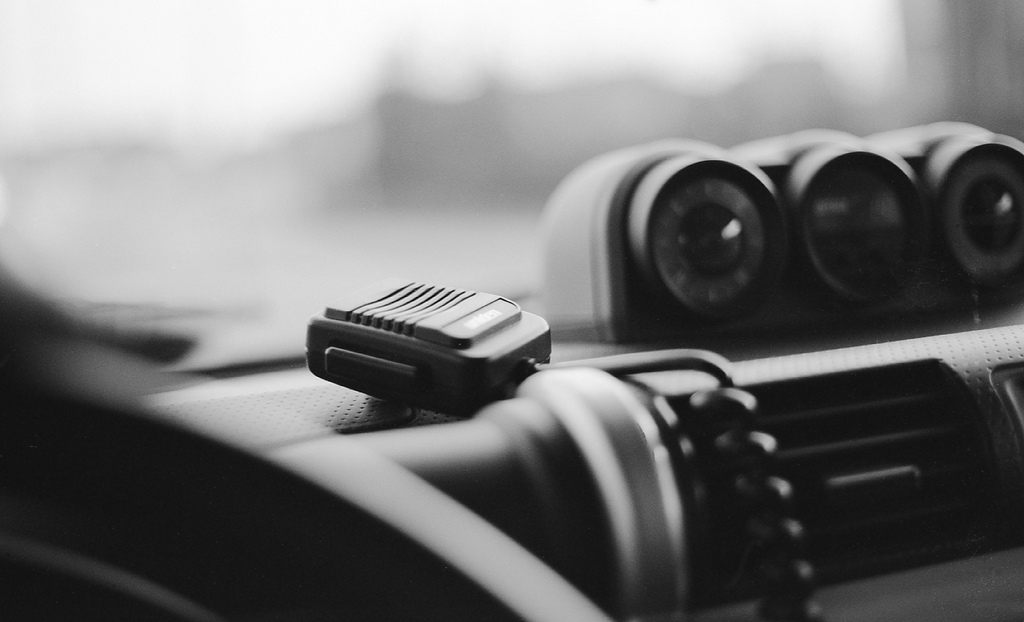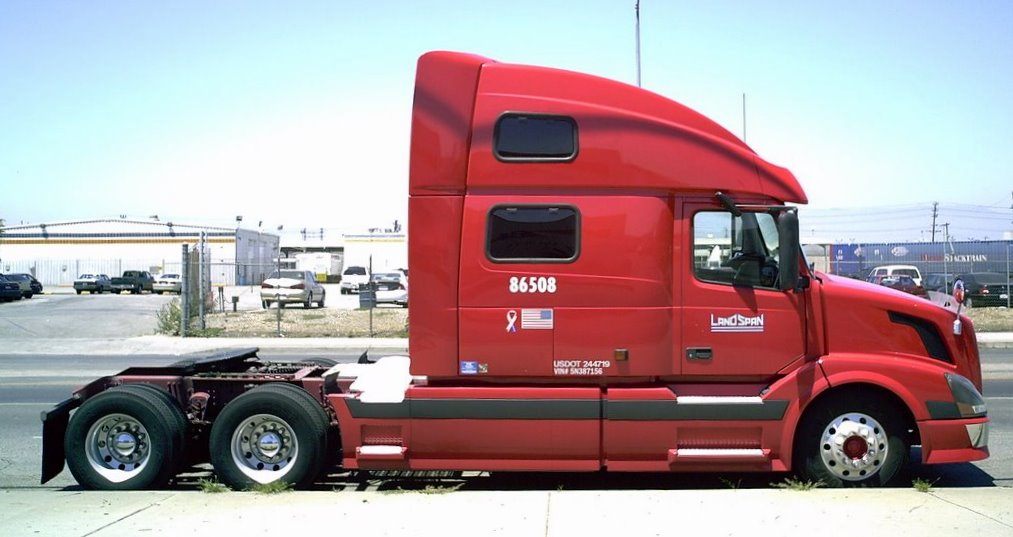‘There’s a County Mounty at the Pickle Park,’ and More Creative Trucker Slang

A truck driver uses a CB radio at the National Museum of American History. (Photo: Kārlis Dambrāns/flickr)
“Smokey in the bush,” says a fuzzy voice coming from a box on the dashboard. Any trucker sailing down Interstate 91 in New England would know the drill: press the brakes, slow down, and look for cops on the horizon.
Such cryptic warnings, which come from other drivers nearby, are sent out over a radio frequency known as Citizens’ Band Radio, or CB Radio for short. Over the last 70 years, dashboard CB devices have become ubiquitous among professional drivers, leading to truckers developing their own lingo for communication.
Though there are now sleeker digital ways for drivers to navigate traffic hazards—such as the Waze cell phone app—CB Radio persists as an emblem of decentralized and uninhibited motorist dialogue. CBs, first invented in the ‘40s as short-distance communication devices, are similar in appearance and operation to ham radios, but use different frequencies and do not require individual exams to get a license (which most other radio devices do). They can be used for both business and personal reasons, which is likely why truckers glommed on to the machines in the mid 20th century.

A CB radio on the dashboard. (Photo: ^ Missi ^/flickr)
It took a while for the technology to find an audience among drivers, mostly due to the hefty cost of the machines. For the first few decades, hobbyists predominately used the radios. But as they became cheaper, CBs became better known among truckers. They really began to catch on in the 1960s, when “the price of the equipment dropped considerably leading many more people to participate,” writes Kristen Haring in her book Ham Radio’s Technical Culture. In fact, by 1963 there were almost half a million licensed CB operators. The devices provided the easiest way to connect with others in the area and alert of any upcoming travel hiccups. And as these solo drivers began conversing with each other, a dialect of sorts arose.
During this time, what became known as “trucker slang” was canonized over the radio waves. While the slang used to this day is associated with CB radios, the lexicon actually predated CBs. “Much trucker slang arose with the advent of the interstate highway system,” writes the Encyclopedia of American Folklife. The drivers started using their own words to describe the open road. “Bumper lane” meant passing lane, “super slab” was the highway.” But it was more palpable warnings that truckers preferred to talk about, namely the authorities. For instance, if one driver saw a cop in a speed trap, he or she would alert others within radio distance. The most common name for a cop was some kind of “bear,” although other words cropped up like “Evil Knievel” and “County Mounty.”
For years CB Radio use remained a way for truckers to pass the time. And over time more words formed. Most of the slang described things you’d see on the highways. For instance, moving trucks became known as “bed buggers” and “pickle parks” were rest areas. In the 1970s CB culture began to transcend trucking, which led to a national interest in the new slang.

Trucks parked for the night in the UK. A State Highway rest area is called a “pickle park.” (Photo: Roger May/WikiCommons CC BY-SA 2.0)
Then came the 1973 oil crisis, in which embargoes in the Middle East saw the price of the black sludge rise from $3 to $12 a barrel. To help reduce oil consumption, the U.S. government passed a 1974 law that restricted highway driving speeds to 55 miles per hour. Naturally, truckers—whose livelihood relied on driving long distances for short durations—were perturbed. The drivers didn’t want to slow down, but they also didn’t want to risk getting speeding tickets. Thus, more professional truckers began buying CB equipment to more easily communicate about potential speed traps. It was their way to be anti-authoritarian in the face of a national law restricting their speed. And thanks to this one-off bill intended to curb gas use, CB sales boomed in the mid-1970s and the radios became a must-have for drivers, write academics Tyler Watts and Jared Barton in their paper I Can’t Drive 55: The Economics of the CB Radio Phenomenon.
As more radio users entered the fray, a more robust slang emerged. Everything that appeared on the road was given an on-the-air euphemism. A school bus became a “cheese wagon;” an ambulance passing by was a “bone box.” Even going to bathroom was given the moniker of “paying the water bill.” These and hundreds of other words and phrases entered the trucker lexicon, and over the years have become memorialized in websites and books. Popular TV shows like The Dukes of Hazzard, where characters would regularly use the devices, giving CB slang a permanent pop-cultural grounding. By 1974 alone there were over six million CB radio operators in the United States, the London Economist reported at the time.

A truck with no trailer, known in trucker slang as a “bobtail”. (Photo: Raunet/WikiCommons CC BY-SA 3.0)
Of course, the CB radio craze declined over the years, as fads are wont to do, but the practice persists in modern trucking. To this day truckers use the same words to warn of upcoming traffic woes, and continue using the old machines. “The CB is still the best way for truck drivers to communicate with each other while they’re rolling down the road,” explains the trucker-centric website Truck News.
All the same, technology is trying to disrupt this now obsolete relic. In the last few years, more than a few trucker-focused smartphone apps have been released—with names like Truckers Tools—hoping to give drivers better routes and easier access to nearby stops. But even the New York Times admitted that the use of CB slang at a local truck stop indicated that “not everyone was on the smartphone bandwagon.”
Until these apps can allow for fun words like “loot limo” and “redneck radio,” why would the drivers want to stop using CBs anyway?










Follow us on Twitter to get the latest on the world's hidden wonders.
Like us on Facebook to get the latest on the world's hidden wonders.
Follow us on Twitter Like us on Facebook